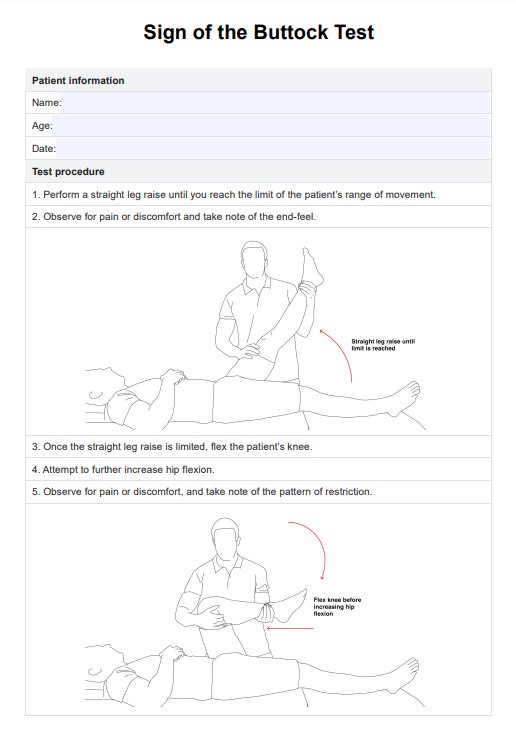Pain in the buttocks can originate from various sources, including muscle strain, sciatic nerve issues, bursitis, or conditions affecting the hip or lower back.

Sign of the Buttock Test
Learn about the Sign of the Buttock Test, a diagnostic tool for identifying serious underlying buttock pathologies. Use our template for consistent, efficient testing.
Sign of the Buttock Test Template
Commonly asked questions
The Sign of the Buttock Test assesses for serious underlying pathologies such as ischial bursitis, neoplasms, abscesses, or hip pathology when a patient presents with buttock pain. It uses indicators such as limited hip flexion and reproduction of pain.
Swelling in the buttocks can be caused by trauma, bone infections (such as osteomyelitis), bursitis, muscle strain, or underlying conditions such as tumors or abscesses. Neoplasms of the upper femur and fractured sacrum can also contribute to swelling due to inflammation and potential bleeding.
EHR and practice management software
Get started for free
*No credit card required
Free
$0/usd
Unlimited clients
Telehealth
1GB of storage
Client portal text
Automated billing and online payments











